If you don’t know what a “pickup” is, don’t read any further…
And if you know, let's look at how to cut out and process a combined selection using an example
trench coat Dior, pattern which you can download in full size almost for free:
What are the selections
As you know, the selection is cut along the shelf or its middle fragment (in products with embossed lines).
There are one-piece selections, as in patterns for collarless coats or jackets:
They are not one-piece, but obtachnye, as in "leather jacket" or in a men's jacket:
View and read in detail about the varieties of selections in outerwear and their processing. You can visit Vera Olkhovskaya's website.
In the case of the Dior trench coat, the selection can be turned or combined (Fig. 1).
How to sew a trench coat without lining or with lining
If you plan to sew a trench coat WITHOUT lining from denim or raincoat fabric, then the stitching selection can be cut out along the middle part of the shelf (Fig. 1 a), repeating it entirely (Fig. 1 b).
How exactly in this case you will duplicate it depends on the fabric and your plan.
If you need a clear inflection of the lapel, then you will have to duplicate the lapel to the line of its inflection.
As a rule, the inflection line of the lapel in outerwear should “cross out” the neckline (Fig. 1a). To outline it, we extend the shoulder section towards the half-skid by 2 cm and connect the resulting point with the lower point of the lapel.
If you don’t need a clear fold of the lapel in an unlined raincoat, then you can only duplicate the hem.
The third option - duplicating the lapel to the inflection line and duplicating the selection completely - is also good (Fig. 3 b).
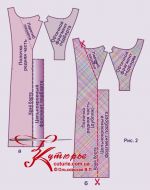 If you plan to sew a trench coat from raincoat or denim, jacquard or drape, then the selection is also cut out along the middle part of the shelf, but below the lapel inflection line it has a width of 7 to 12 cm (Fig. 1 c).
If you plan to sew a trench coat from raincoat or denim, jacquard or drape, then the selection is also cut out along the middle part of the shelf, but below the lapel inflection line it has a width of 7 to 12 cm (Fig. 1 c).
A straight line in this area allows you to make part of the selection one-piece with a shelf (Fig. 1d). It is important that the connection of the turned and one-piece parts does not coincide with the loop.
By the way, about marking the loops for the trench coat.
If the trench coat is semi-adjacent and you are going to wear it without a belt, then one of the loops should be at the lowest point of the lapel inflection line, the other at the waist.
If the trench coat has a free silhouette and a belt is provided, then the second loop should be below or above the waist line.
Duplicating a combined selection
Duplicating a combo selection can look different.
If the shelf and the edge are completely duplicated (Fig. 2), then the dubbing is cut strictly according to the pattern of the shelf, taking into account the width of the lower part of the edge and without seam allowances. On the left (Fig. 2 a) - how a shelf with a single-cut fragment of the hem and a turned fragment of the hem looks like without seam allowances.
On the cut-out (I emphasize: WITHOUT seam allowances) details of dubbing, you should outline the line of the inflection of the lapel and the line of the edge of the side (Fig. 2 b). According to these, the dubbing line is cut so that when gluing onto the product parts, it is possible to make indents at the cutting points.
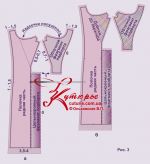 The indents along the fold of the lapel and the edge of the side are 0,3 - 0,5 cm.
The indents along the fold of the lapel and the edge of the side are 0,3 - 0,5 cm.
Now pay attention to the allowances of the shelf and the obtuse fragment of the selection (Fig. 3 a).
Along the relief line and the shoulder seam 1 - 1,5 cm, along the bottom of the shelf - 3 - 3,5 cm, the departure edge of the headband - zero, at the junction of the parts of the headband - 1 cm.
Now attention! the allowance along the edge of the lapel and along the neckline is different for the front and the edge of the edge: 0,5 - 0,7 cm - front, 0,7 - 1 cm - the upper fragment of the edge. Why is the second bigger? To fit the lapel when turning!
Usually, no allowance is added to the neck and sprout so that the cuts do not shorten, but since we have the opportunity to base the neck and / or cut it on the fitting, this allowance is worth adding.
And one more duplication option, more suitable for denim raincoats (Fig. 3 b). Duplicate only the collar and lapel to the line of its inflection.
Life-size patterns of women's coats and jackets, fur coats




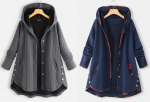

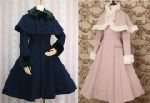

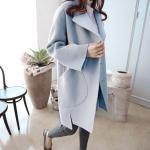

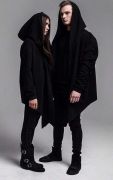

 Join my community on Viber...
Join my community on Viber...











